Cruising the Galapagos
The Galapagos Islands are lands of unparalleled uniqueness. In the 1830’s, Charles Darwin made a historic scientific visit to the Galapagos, and in 1859, he published his Theory of Evolution, largely using the flora and fauna of the Galapagos to further define and prove his ideas. Between three and five million years ago, the islands were born out of volcanic activity, and have been isolated from the mainland ever since, putting it on a different evolutionary path. Over millions of years, the plants and animals on the islands evolved and adapted to their unique surroundings. As a result, over 80% of the species and subspecies are endemic, meaning they are found only in the Galapagos, custom-made for their remote equatorial home.
We’ve been lucky enough to have had the opportunity to follow in Darwin’s footsteps, exploring the Galapagos, albeit in significantly more comfort than he. Our home for five days was a luxury yacht, complete with a lounge, dining room, three meals a day prepared by a personal chef, large bedroom cabin, jacuzzi, bar, and sun deck. Coming in at around $1800 per person, including the flight, it’s definitely a big expense, but one that we knew was coming and saved up for specifically. Helping matters, the cruise we’re on actually retails for around $3500 per person if you book months in advance, but since we booked last-minute from Quito, we were able to secure a significant discount. In Quito, there are dozens of tour operators with last-minute tours on offer that leave almost daily, so if you’re planning a Galapagos trip and can spare a day or two to seek out a tour, you can easily save 40 to 50 percent by booking in Quito rather than online. In addition to the luxurious accommodations, the package includes numerous excursions to allow you to appreciate the other-worldliness of the area.
Day 1
Our shuttle picked us up at 2:45am, when a number of our fellow hostel dwellers were still trickling in from the booming nightlife scene of Quito. We arrived at the airport at around 3:30, and were told that we needed to wait in a particular line for a booth that didn’t open until 5:00; we had to wait for an hour and a half, but at least we were first in line! At this booth, you’re required to pay $20 per person for your Control Register form, which you need to get on the plane. From there, we had to go through an X-Ray screening, separate from the security line, to ensure we weren’t bringing any biological contaminants into the Galapagos Islands, as the ecosystem there is somewhat fragile; the Galapagos is one of the most strictly protected natural areas in the world. The flight was around two and a half hours, although we made a stopover in Guayaquil which prolonged it a bit; a direct flight takes around 90 minutes. Once at the Baltra airport, we had to pay the $100 per person Galapagos entry fee (they do love their fees) and go through another X-Ray screening to further ensure there would be no contamination. Once through, our tour guide picked us up from the terminal and took us and the other seven passengers to the ship.
After a tasty lunch, we arrived at our first destination; Dragon Hill, located on the island of Santa Cruz, is named for the giant iguanas that call the area home. The Galapagos has an extreme variety of ecosystems, and this particular area is a very dry, hot desert, home to the iguanas, cacti, sandalwood trees, and crabs. We went on a two-hour walk while our tour guide, Christian, explained what we were seeing and helped us to spot some of the more elusive animals.
Afterwards, we retired for a nice dinner and a few drinks on the boat. Due to our early morning, we didn’t last much longer than that before heading to bed.
Day 2
We awoke for breakfast at 7:00am, consisting of fruit, bread, french toast, and omelettes personally prepared by the chef. At 8:00, we boarded the smaller motorboats, called Zodiacs, and set out on a tour of Black Turtle Cove, an inlet location covered in Mangrove trees reaching down into the water with their roots.
Due to the shallow water and moderate temperature, this bay is the ideal location for a number of marine animals to live out their juvenile years, spending their adolescence in the comparatively safe environment before heading out into the open waters upon reaching maturity. We saw a huge variety of animals here, including birds like blue-footed boobies, herons, and pelicans, as well as marine animals such as white-tipped sharks, spotted eagle rays, schools of colorful fish, and the star of the area, green sea turtles (like the ones in Finding Nemo). This being their breeding grounds, the ones we spotted were either adolescents or their mothers; the large males spend most of the year migrating to places like Hawaii, Indonesia, and Australia.
After lunch, we had the opportunity to go snorkeling, at a place called Sombrero Chino, or “Chinese Hat”, due to the conical shape of the island. Beneath the surface of the water were sea lions, schools of colorful fish, coral, and starfish. Later, we had the opportunity to walk along the beach to see a large number of female and juvenile sea lions, as well as the alpha male that controls that stretch of territory. The island itself is also a sight to see; many of the rocks were formed by a volcanic eruption taking place only 500 years or so ago, and the lava flows themselves are still very clear.
Day 3
After a turbulent night at sea, we awoke near the remote Genovesa Island. We took the Zodiacs to shore, where we were able to spot a number of unique birds, including the Red Footed Booby, the Masked Booby, and the Galapagos Short-Eared Owl. The owl is unique because it is one of the only owls that hunts during the day rather than the night. We were also able to spy a few sea lions cooling off in the shade; these sea lions were a different species than the ones we saw the day prior. The sea lions seen on day two were the same species that you can see on the coast of California, while these ones migrate up from the southern reaches of Argentina; due to their climate, they’re actually furry rather than slick. Later, I was able to snorkel around the same area, spotting a couple of sea lions swimming under the water (Bridgette opted to stay on the boat). Unfortunately, the area was also rife with jellyfish spores, so I came up with as many jellyfish pricks as I did good pictures. They faded after just a few hours (the stings, not the pictures).
Later, we took a stroll on the beach where we saw more birds, sea lions, and stingrays. After a lazy beach afternoon, we headed back to the boat and hopped in a kayak for a self-propelled tour of the area. For around 40 minutes we paddled past birds, igneous rock formations, and lots of colorful crabs and fish. It took us a while to get a system down; at first we had trouble fighting the current and kept ending up sideways, but I took over steering in the back while Bridgette paddled and before long we were on our way.
Day 4
We had an early breakfast due to the very full morning that was planned. First, we ascended Bartolome Island, where we had a great view of the surrounding landscape. As the guide remarked, if you Google “Galapagos pictures”, the first results are probably going to be from Bartolome. It’s incredibly picturesque, and we were given ample time to wander the island collecting Google results of our own.
Afterwards we were given our final opportunity to snorkel, and it turned out to be the best one of the trip. After seeing a large number of colorful fish, we turned around and came face-to-face with a sea lion that had hopped in the water and swim around us, almost like it was trying to play, thinking we were fellow sea lions. It darted around us with acrobatic agility, proving to be much more graceful in the water than on land. After a few minutes, it grew bored with our comparatively un-athletic swimming tricks and swam off to find some lunch.
Our last excursion of the morning was to a relatively recently created rock formation; a volcanic eruption around 150 years ago resulted in lava flows that rose above the water and cooled, creating a large island of black rock. You can still see the shapes of the liquid flows in the rock; the unique patterns combined with the unusual color results in an almost otherworldly appearance.
The afternoon was spent at sea, as we had about a six-hour sail ahead of us to reach our next destination, Santa Cruz, one of the few populated islands in the Galapagos. Boasting a population of around 20,000, the small port is actually the most heavily populated town in the region. We spent an hour or two exploring the main strip, wandering through some small souvenir shops and happily supporting some of the local bars, before heading back to the ship for our last night.
Day 5
On our final day, we dragged ourselves out of bed to make the 5:30am breakfast, our earliest yet. After bidding the ship farewell, we took our last Zodiac ride to shore and loaded onto a bus, which took us to the highlands of Santa Cruz to a local ranch where we could spot one of the archipelago’s most famous residents, the Galapagos Tortoise, the largest living species of tortoise. They look and move like something out of Jurassic Park, and it’s easy to see how closely related they are to the dinosaurs.
From there, we reluctantly headed to the airport and back to “reality”. There really is nowhere else on Earth like the Galapagos, and if you can spare the time and funds, it’s definitely worth going out of your way for. Learning how uniquely adapted each species is to its environment really brought some old science lessons to life, and seeing creatures we’d only seen in zoos out in their natural habitats was pretty amazing. Five weeks in the Galapagos was enough for Darwin to base the next 25 years of his study on; five days was certainly enough to collect years’ worth of stories and memories.


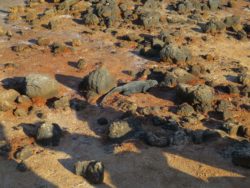

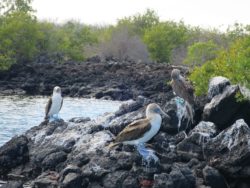
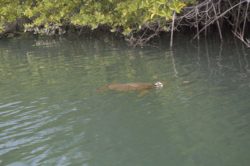
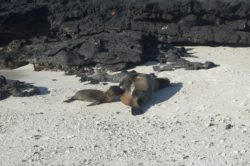
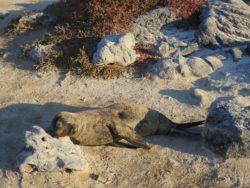


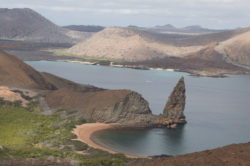
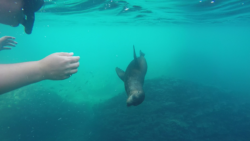
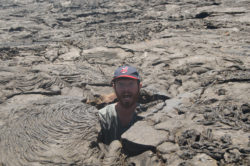
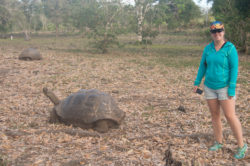








Just WOW!!!! ? ? ? ?